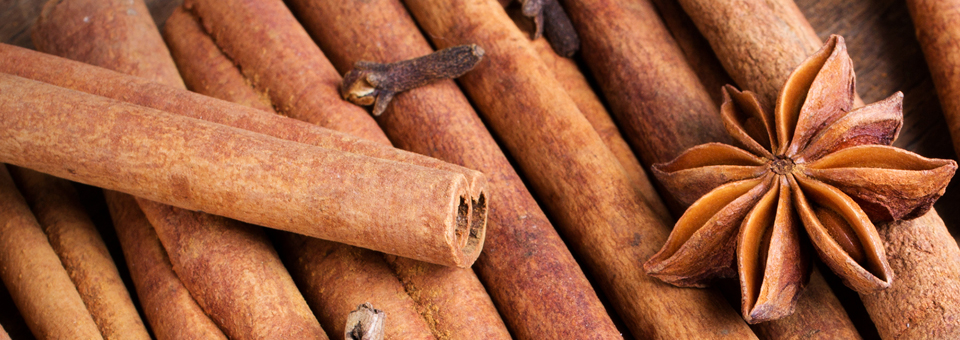
On my last trip to Bali, I was lucky enough to meet Ketut Liyer. He’s a traditional Balinese healer and palm reader who skyrocketed to fame following the Julia Robert’s movie Eat Pray Love.
We were talking outside in his lush green herbal garden. He took my hand in his. “Mr. Doctor,” he said to me. “You have strong shoulders and a big heart. You are a rare kind.”
It was an amazing moment. One I won’t forget.
Shortly after, a friend of his took me on a tour of the gardens. In the distance was a tree I didn’t recognize. Tied to its trunk on a long rope was a monkey.
I watched him playing for a few minutes. Then I asked my guide what kind of tree it was.
“Cinnamon,” he told me. “Do you want some?”
Before I could respond, he gave the monkey a command. The monkey quickly scampered to the tree. He peeled off a piece of cinnamon bark and brought it to me.
It smelled great. I love using cinnamon. I add it to cooking and sprinkle it over yogurt.
But there’s more to this ancient spice than great flavor.
Cinnamon can help balance your blood sugar.
That’s especially important today. Our modern diet causes your pancreas to produce too much insulin.
And too much insulin overwhelms the insulin receptors in your cells and makes them insulin-resistant. This leads to high glucose levels, which in turn causes prediabetes and ultimately full-blown type 2 diabetes.
Big Pharma has hundreds of drugs to try to treat diabetes. But studies show they do nothing to save lives. And they have terrible side effects.
I help my patients balance their blood sugar with natural alternatives, including cinnamon.
A USDA study found that cinnamon significantly increases insulin production and balances blood sugar.1
And in a study in the American Journal of Clinical Nutrition people ate about a cup of rice pudding with or without a teaspoon of cinnamon. Adding the cinnamon slowed the rate the stomach emptied by up to 37%. That significantly slowed the rise in blood sugar levels. It also increased levels of a peptide that helps prevent overeating which can lead to spikes in blood sugar.2
Cinnamon is also a powerful antioxidant. It reduces inflammation and promotes heart health.3 And it can help you lose weight. Studies show that cinnamon actually mimics insulin to clear glucose from your blood so your body stops storing excess sugar as fat.4
Other research shows that cinnamon helps:
- Reduce blood pressure
- Relieve arthritis
- Alleviate menstrual cramps
- Support healthy blood clotting
- Boost memory
- Improve digestion
I recommend using a teaspoon of cinnamon powder a day. But make sure you get the right kind of cinnamon…
You see, that jar of “cinnamon” in your cupboard is probably not true cinnamon at all, but a very similar spice known as “cassia” (Cinnamomum cassia).
True cinnamon (Cinnamomum zeylanicum) is usually labeled “Ceylon cinnamon.” It is sweeter, lighter and more refined than cassia. It’s most suitable to flavoring desserts. Cassia is heavier and more suited to robust, savory dishes.
Ceylon cinnamon comes from Sri Lanka, India, Madagascar, Brazil and the Caribbean. It’s more expensive and harder to find. But it’s what I recommend for my patients. You see, cassia has higher levels of coumarin, a natural blood thinner. In fact, cassia has about 250 times more coumarin than Ceylon cinnamon does. Too much coumarin can cause liver toxicity and cancer.
And patients on blood thinners like warfarin (brand name Coumadin) are often advised to limit their intake of cinnamon. But that applies to cassia more so than to real cinnamon.
Cinnamon-Ginger Tea
For years, I’ve been telling my diabetic patients to take a cinnamon supplement. Studies show that 500 mg a day regulates blood sugar levels even in people with insulin resistance.5
Or you can make cinnamon tea. Not only does it help balance blood sugar, it tastes great. I like adding a bit of ginger to my tea. Here’s my favorite recipe:
Ingredients:
- 1 1/4 cup distilled water
- 1/2 of a 3-inch Ceylon cinnamon stick
- 1/2 tsp grated ginger
- 1 tsp honey
Directions:
- Add water, cinnamon and ginger to pot.
- Cover and bring to a slow boil for 10 minutes.
- Remove from heat and let rest for another 2 minutes.
- Strain it and serve hot with honey.
To Your Good Health,
![]()
Al Sears, MD, CNS
1. Broadhurst L, et al. “Insulin-like biological activity of culinary and medicinal plant aqueous extracts in vitro.” J Agric Food Chem. 2000 Mar.
2. Hlebowicz J, et al. “Effects of 1 and 3 g cinnamon on gastric emptying, satiety and postprandial blood glucose, insulin, glucose-dependent insulinotropic polypeptide, glucagon-like peptide 1 and ghrelin concentrations in healthy subjects.” Am J Clin Nutr. 2009 March.
3. Kim SH, Choung SY. “Antihyperglycemic and antihyperlipidemic action of Cinnamomi Cassiae (Cinnamon bark) extract in C57BL/Ks db/db mice.” Arch Pharm Res. 2010 Feb.
4. Qin B, Nagasaki M, Ren M, Bajotto G, Oshida Y, Sato Y. “Cinnamon extract prevents the insulin resistance induced by a high-fructose diet.” Horm Metab Res. 2004 Feb.
5. Stoecker BJ, et al. “Cinnamon extract lowers blood glucose in hyperglycemic subjects.” FASEB J. 2010.








